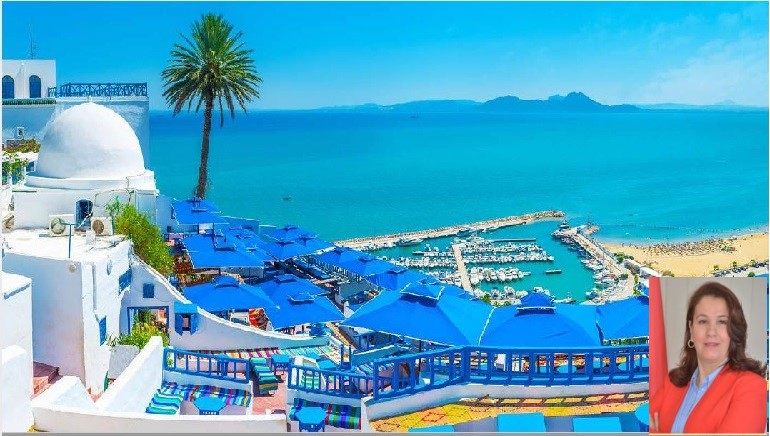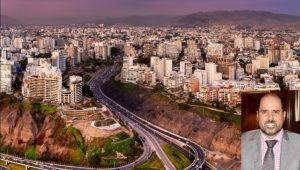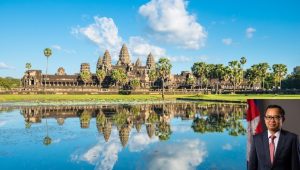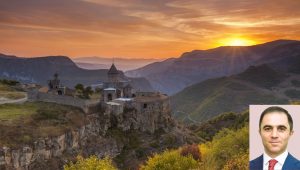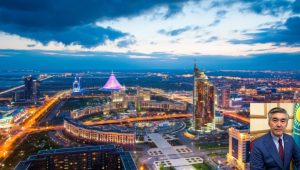The original inhabitants are the Berbers, in 850 BC Dido founded Carthage the city that dominated the Mediterranean and faced Rome at the highest of its power. After three Punic wars, Rome took control of the region for 500 years, and then came the Muslims and the ottoman dynasty, and then the French occupation until Tunisia’s independence in 1956.
CLIMATE: A YEAR-ROUND DESTINATION
In addition to its excellent geographical location, Tunisia enjoys a great weather that makes it a year-round tourist destination : A Mediterranean climate on the northern coast, (rainy winters and sunny summers) while it is semi-desert or desert in inland areas with hot, dry summers and mild, rainy winters.
This climate diversity gives various options to choose when to go. If you want to visit the coast, the best period is between May and October, while the best period to visit the Tunisian desert will be between November and February.
This made Tunisia among the principal touristic destinations in the Mediterranean region, until October 2019 around 7.5 million tourists visited Tunisia mostly from Europe and Algeria, Russia, Japan, China and India
WHY YOU SHOULD SPEND YOUR NEXT HOLIDAY IN TUNISIA?
In fact, there are many reasons, as a tourist, you can enjoy the sea, the desert, visit museums, see Roman and Islamic monuments, enjoy thalasso, taste great food, play golf, shop in markets full of colours, and enjoy an active nightlife only in one country
Tunisia.
THE PEOPLE
Tunisians are friendly warm and generous people. They welcome guests from all over the world and are familiar with all Western and Eastern cultures especially Indian culture. Indian music and Bollywood movies are very popular.
THE BEACHES
In addition, Tunisia has more than 1300 kilometres of beautiful beaches that start from Tabarka in the north to Djerba in the south. Many hotels have their own private beaches in addition to uninhabited coastline where you can enjoy your own private stretch of paradise.
THE FOOD
Centuries of foreign occupation has incorporated French, Roman and Ottoman influences, leading to a culinary confluence that brings something to the table for everyone: from the French bread to the Turkish sweets and Italian pasta, all made in the Tunisian way. Tunisian food is spicy, sometimes Indian-level spicy, with a use of seafood, olive oil, and Harissa a hot chili paste served with most meals as a dip and is often used as an ingredient in stews and soups. It is sometimes described as “Tunisia’s main condiment”.
“Couscous” is very well known Tunisian food which can be prepared by lamb, fish, of vegetables. “Lablabi” the perfect plate for winter consists of of bread, eggs, harissa and spices all mixed with olive oil. “Brik” pastry and “salad mechouia” with tomatoes and peppers are appetizing starters, as are fresh bread and sauces, tuna, olives, roast green peppers and harissa.
NIGHTLIFE
For lovers of nightlife, Tunisia will also be your favourite destination. During the summer, festivals and concerts are spread all over the country. Night clubs are easy to find in many tourist areas and hotels especially in Hammamet and Sousse.
Active nightlife is not restricted only to the coastal areas only. Every year in November, the Electronic Dunes Festival takes place where you can enjoy dancing and music in the heart of the Nefta desert.
HOTELS AND RESORTS
Tunisia has a very developed touristic infrastructure and resorts with more than 850 hotels of various categories.
In quantitative terms, the rooming capacity in Tunisia has considerably developed, to reach 237.618 beds in 2018.
Two days ago, a few kilometers from Tozeur International Airport and the famous film site “Star Wars Epic”, “AnantaraTozeur” was inaugurated in the heart of the desert as one of the most prestigious hotels in the world.
The 5 stars hotel has 93 rooms including luxurious villas of up to 900 square meters, swimming pools, a relaxing spa, a market and a total of six restaurants.
In 2018, the famous Forbes magazine ranked Anantara Tozeur as one of the best luxury hotels in the world.
MEDICAL TOURISM
Tunisia is the second Thalassotherapy destination at a world scale after France. There are more than 49 Thalassotherapy centers throughout the country. Most of them are integrated in 5 stars Hotels. And they receive more than 152,000 visitors every year mainly from Germany France and Switzerland.
ENJOY THE EMERGING ECO TOURISM CULTURE
Eco tourism is a good choice for lovers of wild life and fresh air. In Tabarka Ain Draham or Zaghouan you can meet with the local people, share their daily life activities and spend a night in a eco friendly farm house in an experience that will allow feel the real countryside life.
DO NOT MISS !!
Often seen as simply a beach destination, Tunisia has many other attractions that make you enjoy an unforgettable journey, the old Medina of Tunis, SidiBou Said, Carthage, Kairouan, Djerba, and others places will make it live Tunisia’s cultural and historical beauty.
CARTHAGE
Founded by the King of Tyre’s daughter Elissa In 814 BC, Carthage is designated a UNESCO World Heritage Site and is worth a long visit. The accumulation of ruins across a vast zone allows the ancient city to come alive in the imagination. In the rchaeological museum, visitors can discover the art and religious rituals of Punic Carthage. There is a rich nightlife there: restaurants, lounges, nightclubs, jazz festivals, and classical music festivals. In summer, the historic theatre hosts international shows for the International Festival of Carthage.
THE NATIONAL BARDO MUSEUM
If you want to understand the long history of Tunisia, the National Bardo Museum is a good place to start. The country’s top museum, one of the largest in Africa, is housed within a fifteenth century Hafsid palace and displays a collection of archaeological artifacts and works of art spanning the totality of Tunisia’s history. The highlight of the impressive collection is the collection of well preserved Roman mosaics – one of the best collections in the world.
SIDI BOU SAID
Located just north of Tunis, the capital. The entire town is simply beautiful, located on top of a steep cliff, which overlooks the Mediterranean Sea, with flowers draped from almost every wall and doorway, and beautiful flowing vines hanging throughout the entire area. The view from SidiBou Said is absolutely phenomenal, and will continue to amaze you throughout your entire trip.
ENJOY THE SOUKS
Built in the 7th century, the Tunis medina was one of the first Arabo-Muslim towns in the Magreb, and it is a must-see for visitors. The streets in the medina are narrow and winding, full of covered souks, artisans’ workshops and residential buildings with colourful painted doors. The souks are organised by the type of products on sale. So there are souks for perfume, wedding goods, spices, textiles and so on.
HAMMAMET
Hammamet is a wonderful resort town in Tunisia. With its sandy beaches, the town is the definite top place to go to enjoy amazing holidays near the sea. Furthermore, Hammamet has a lot more to give than simply swimming and enjoying water sports on the beach. From the well-known Jasmine you can find all over the region to the many interesting buildings and natural wonders of the area, you’ll find plenty of things to fulfill your Tunisian vacation.
EL JEM AMPHITHEATER
The impressive ruins of the largest colosseum in North Africa, a huge amphitheatre which could hold up to 35,000 spectators, is found in the small village of El Jem, 3 hours from Tunis. This 3rd-century monument is one of the most iconic architectural contributions of ancient Rome.
KAIROUAN
Away from the coast, Kairouan is a fascinating city still anchored in a distant past. One of Islam’s holy cities, it was the first capital of the Maghreb. Designated a UNESCO World Heritage site, it conceals several marvels: the medina, the venerable Great Mosque, the Aghlabid Basins, the stunning mausoleum of SidiSahbi decorated with ceramic tiles… And of course it is impossible to forget the numerous workshops where the most famous carpets in Tunisia are made.
THE SAHARA
If you head south, you can enjoy a night in the heart of the Tunisian desert, enjoy the sunset and oasis scenes, and ride a camel. In a unique experience that makes you feel the true sense of freedom in the extended desert.
DJERBA
Tunisia’s southern island of Djerba is known for drawing tourists to its whitewashed buildings, sandy beaches rimmed with turquoise water, and colourful souks. But it’s also notable as a bastion of coexistence. The small island is the home of the last Tunisian Jews, with one of the largest and most vibrant Jewish populations in the Arab world – and the oldest synagogue in Africa.
GRAND ERG ORIENTAL
The Grand Erg Oriental is a large series of sand dunes located in the Tunisian Desert. This spectacular and expansive sand formation is truly one of the natural wonders of Tunisia. It spans an impressive area of 600 km in width and 200 km long.
There are a number of tours available to Grand Erg, and many people visit this area of the Sahara each year to witness its remarkable beauty.
STAR WARS LOCATIONS
If you have Star Wars fans in the family, you can base a whole week trip on seeing the film locations. This includes visiting the underground ‘troglodyte’ structures of Matmata, taking a hike in ‘Star Wars Canyon’ and walking through the streets of “MosEspa”.
While Star Wars is one of the best-known movies to have been shot in Tunisia, it is certainly not the only one. Raiders of the Lost Ark, The English Patient and even The Life of Brian were all filmed in Tunisia which can be an ideal location for Indian film-makers to shot the next Bollywood films.





